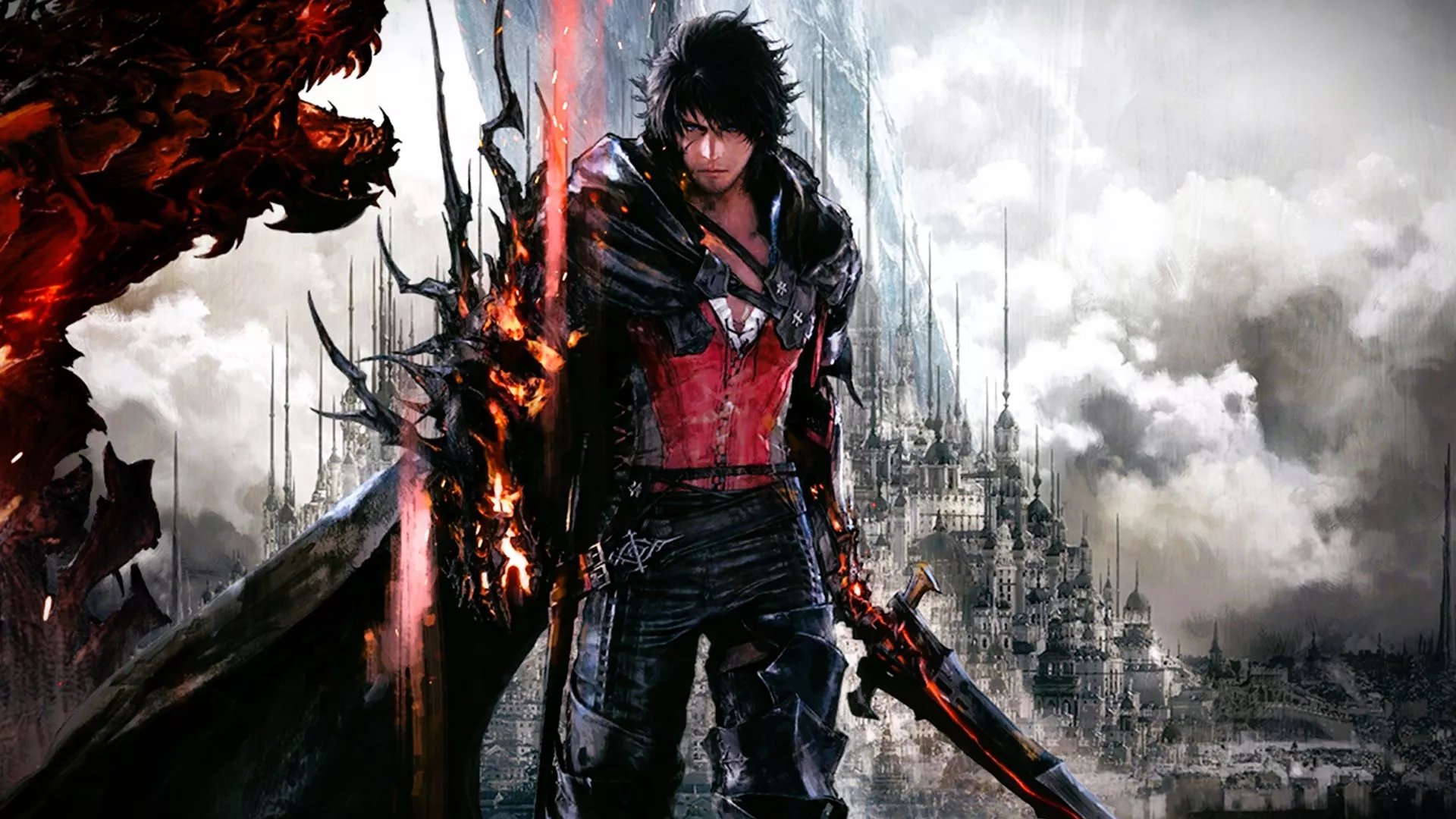In February, I had the opportunity to attend a hands-on preview event for Final Fantasy 16, and I considered myself lucky. After experiencing the game firsthand, I was eager to reassure those who were concerned about the changes to the traditional Final Fantasy formula that there was nothing to worry about. What I witnessed was an incredibly thrilling and visually stunning demonstration of next-gen gaming, which left me in awe. While it may not have been a conventional Final Fantasy game, it was an experience that demanded to be felt by all.
Most of the positive aspects I mentioned about the Final Fantasy 16 demo can also be attributed to the full game. Final Fantasy 16 is a breathtaking action game with an exceptional soundtrack and an engrossing story, both of which are well-known strengths of the franchise.
However, the complete version of Final Fantasy 16 reveals a painful truth that could never be conveyed through a mere snapshot of the experience. While the game rightfully challenges the traditional Final Fantasy formula in many ways, it unfortunately discards or waters down too many RPG concepts, which ultimately hampers the overall achievement of the game.
Missed Opportunities for Action Enhancement
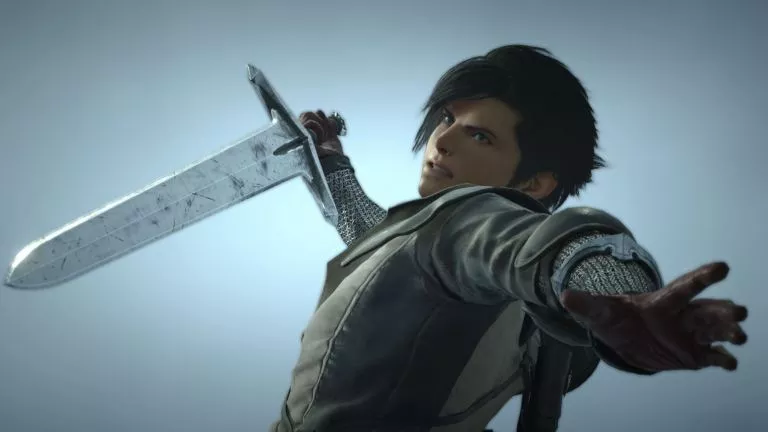
While there’s often debate about the definition of an RPG, certain design elements typically characterize the genre. One key aspect is the emphasis on character growth through an experience system. RPGs stand out by allowing players to gradually shape their role in the game based on their choices, preferences, and experiences.
However, Final Fantasy 16 only pays minimal homage to this fundamental concept, along with other RPG-like elements. The game’s protagonist, Clive, offers limited options for gameplay-related character development, primarily through the choice of Eikon abilities.
As you progress through Final Fantasy 16’s story, you’ll unlock seven (and a half) Eikon grids, each containing multiple abilities associated with that entity. By spending Ability Points, you can unlock and upgrade these abilities. However, the scope of converting your experience points into meaningful character traits is relatively restricted. You can choose three Eikon forms and six main Eikon abilities, and while you have the flexibility to mix and match these abilities, creating truly engaging combinations proves challenging.
Unfortunately, the abilities in the game don’t significantly impact gameplay as they ideally should. The majority of abilities fall into categories such as damage attacks, stagger attacks, or defensive maneuvers. Although some abilities incorporate aspects of multiple categories, only a few late-game abilities offer truly unique mechanics. While the flexibility to experiment with ability combinations is appreciated, creating compelling and diverse combos becomes difficult.
Most major battles in the game revolve around inflicting Stagger damage to stun bosses before employing more powerful damage-dealing abilities. During these encounters, you’ll intersperse basic strikes to reduce cooldowns while evading potent enemy attacks. Despite the intensity and visual spectacle of these fights, they suffer from a disconnect with even the fundamental RPG elements.
The damage you deal and the methods of dealing it rarely feel connected to your character’s chosen build or the improvements gained through combat experience. Many of Final Fantasy 16’s battles seem orchestrated to provide a specific experience, almost ensuring that you won’t deviate from the intended flow and pacing. Perhaps that’s why the most memorable fights, the epic Eikon vs. Eikon encounters, are blatantly choreographed. These moments abandon any pretense of adhering to traditional RPG conventions.
Similarly, as you progress in the game, the choice of Eikon abilities becomes evident. Late-game abilities surpass their predecessors in power to such an extent that not utilizing them would seem irresponsible. Additionally, the unlocking order of these abilities follows a rigid structure, limiting exploration of the character building system until very late stages.
The absence of a job or class system also hampers the game. You can’t simply decide to become a mage, a mighty warrior, or a debuff specialist. The Eikons, from which you draw power, possess unique styles, but investing heavily in one Eikon to access their full potential at the expense of others isn’t possible. When abilities are on cooldown, you’re left with just Clive. You can’t build a party around Clive, and your capacity to enhance Clive’s base form through your actions and decisions is painfully limited.
Unfortunately, Final Fantasy 16’s stats and gear systems, which should have addressed the aforementioned issue, turn out to be two of the game’s most significant weaknesses.
Final Fantasy 16’s Stats and Gear Lacking Substance
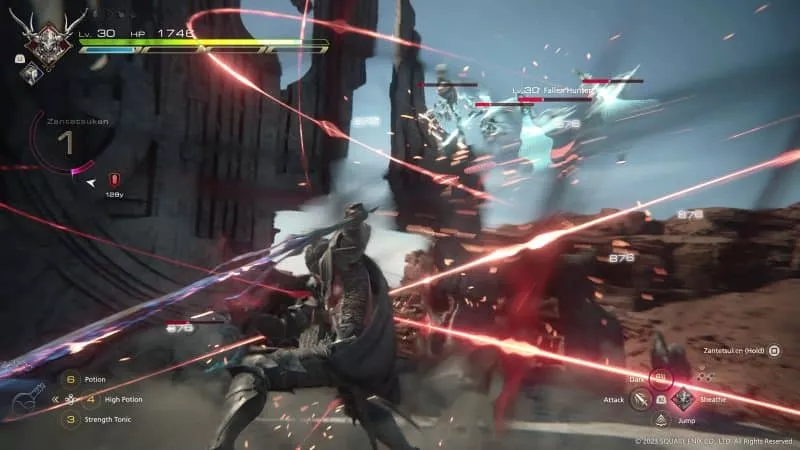
Clive’s power level in Final Fantasy 16, like many RPG characters, is largely determined by various stats. HP affects maximum health, Willpower affects Stagger damage, and so on. These stats are displayed every time Clive levels up, which is helpful because otherwise, I would have easily forgotten about them.
However, apart from automatic level-ups and equipping new gear that is generally superior, you have little control over Clive’s stat growth. You can’t choose which stats to focus on, and there are no secondary stats that significantly alter Clive’s combat style. While you can make Clive more powerful, the stats don’t provide much agency in determining how he (and by extension, you) approaches combat.
If Final Fantasy 16 isn’t that kind of RPG, then why do these stats exist? Aside from HP, which visibly increases the health bar, I didn’t feel the intended impact of most stat upgrades. Since enemies scale with your level, and the primary way to influence combat is by selecting different Eikon abilities, the stats primarily reflect where you are in the game rather than your playstyle or personal progress. They acknowledge character growth without truly offering meaningful opportunities to do so.
The gear and equipment in Final Fantasy 16 suffer from a similar issue. Most new gear you receive is objectively better than previous ones and often distributed at story-related moments you can’t avoid. While there are a few exceptional pieces of gear you can actively seek, most don’t provide special abilities, noticeable improvements, or even the ability to change Clive’s appearance. They mostly offer additional stats that don’t always translate into an enhanced gameplay experience.
For example, there’s a hidden ultimate weapon in the base campaign that is clearly superior to all others. It offers 35 more Attack and Stagger points than the next best option. However, you would need a side-by-side comparison to grasp the significance of that statistical difference in terms of damage output.
Even pure action games like Devil May Cry offer weapons that allow for slightly different playstyles. In contrast, in Final Fantasy 16, the only way to determine your combat approach is by choosing Eikon abilities. Gear in the game only affects those abilities through accessories, and most accessories merely make abilities slightly more potent. Why not provide swords and armor with secondary stats that offer similar benefits? What’s the purpose of a gear system if most upgrades are plot necessities with little impact on the gameplay experience?
The issue isn’t that Final Fantasy 16 features an action-heavy, real-time combat system instead of the traditional turn-based Final Fantasy system. The problem is that it attempts to maintain the illusion of traditional Final Fantasy RPG mechanics without utilizing them meaningfully or introducing new ideas that align with the game’s objectives.
Regrettably, this issue soon extends beyond combat, impacting various aspects of the game.
Final Fantasy 16’s Linear World Structure Impedes Storytelling
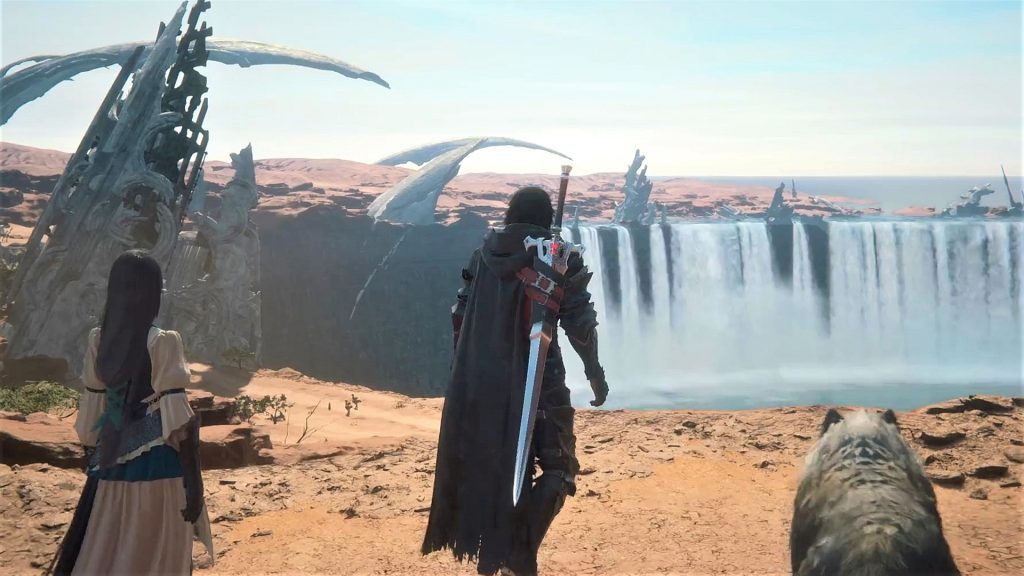
Final Fantasy 16’s developers have been transparent about the game not being an open-world experience, which is commendable despite potentially affecting pre-orders. However, it becomes peculiar when Final Fantasy 16 attempts to appear larger than it truly is.
Beyond the initial tutorial sections, most areas in Final Fantasy 16 offer limited navigation within varying-sized regions. While all paths lead to major quests and there’s no world map navigation, you can engage in sidequests, optional fights, and collect scattered items within these multi-path locations.
This approach isn’t inherently problematic. Many Final Fantasy games are more linear than their expansive world maps suggest, and Final Fantasy 16 focuses on reducing time spent in largely redundant spaces. In a sea of unnecessarily open-world games, it’s admirable that Final Fantasy 16 strives for something different.
The issue lies in the lack of depth and breadth in Final Fantasy 16’s worlds. The items you diligently collect often turn out to be crafting materials that clutter your inventory. There are few worthwhile things to craft, and those that are worth it usually require minimal resources. While you may find the occasional gear off the beaten path, such discoveries are disappointingly rare, as much of that gear gets replaced simply by progressing through the main story.
The option to grind battles for quicker leveling is theoretically available, but as mentioned earlier, character level has limited impact on the difficulty of major fights. Ability Points can be earned to unlock new skills, but the game’s refund system makes that aspect redundant. There’s no need to grind levels, and there isn’t a significant incentive to go out of your way for these combat sequences beyond personal enjoyment.
Even Final Fantasy 16’s sidequests feel oddly unnecessary. The ones that offer significant upgrades are marked with a “+” symbol to emphasize their importance. Most other sidequests merely provide crafting materials or currency that you rarely get to use.
While the experience of participating in sidequests should be the motivation, many of them offer little enjoyment beyond their largely useless item rewards. Most are fetch quests or basic combat sequences, and none stood out with a compelling narrative that is a must-experience to appreciate the game’s best aspects.
I sometimes felt that the Final Fantasy 16 team may have been reluctant to make non-marked sidequests substantial, perhaps to avoid pressuring players to complete them or disrupting the main story’s flow.
Considering that a significant portion of the main story consists of forced cutscenes, I genuinely believe that more substantial sidequests could have alleviated the game’s pacing issues. At the very least, they would have provided a sense that meaningful content awaits discovery, rather than only being reached after watching enough cutscenes.
Without those engaging sidequests, minigames, and other enjoyable distractions, Final Fantasy 16 feels less substantial compared to previous Final Fantasy games that offered intriguing reasons to deviate from the main path, even if those distractions eventually led back to the same destination.
Final Fantasy 16’s Runtime Exceeds Its Role
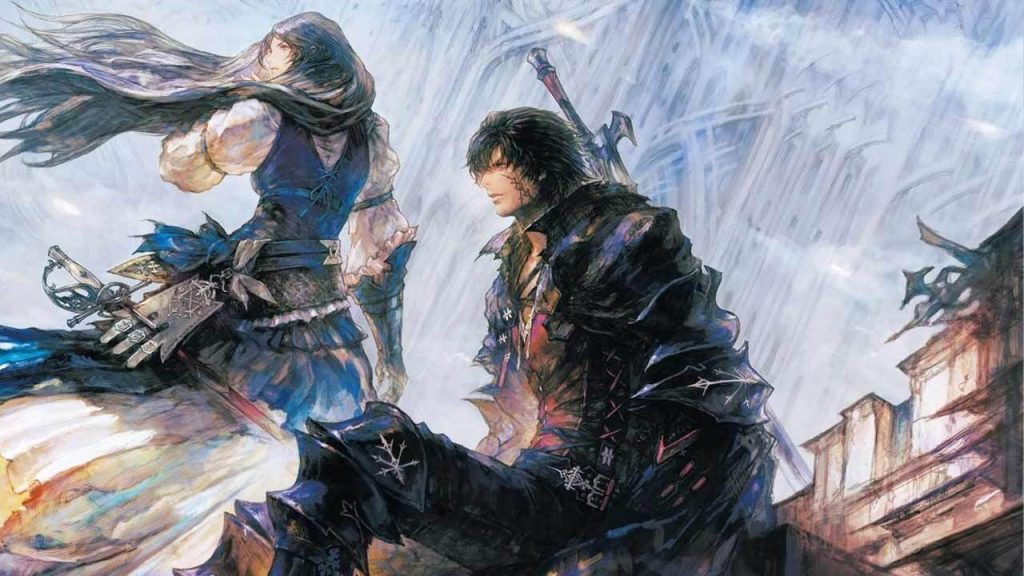
In many respects, Final Fantasy 16 can be seen as an evolution of the original God of War trilogy, and I mean that as a compliment. I admire how those games pushed the boundaries of their hardware, delivering awe-inspiring moments backed by top-tier production values and intense action. It’s been too long since we’ve had a boldly epic action game like the God of War trilogy, and Final Fantasy 16 offers a strikingly similar experience.
However, it’s important to note that the God of War games were roughly 10 hours long. Similarly, recent notable “pure” action titles like Devil May Cry 5 or Bayonetta 2 also fall within that runtime. On the other hand, even if you focus solely on the main story, Final Fantasy 16 will require around 30 hours to complete.
Regrettably, Final Fantasy 16 doesn’t always provide three times the experience found in its spiritually akin games. It often feels obliged to deliver a typical mainline Final Fantasy experience, which takes a considerable amount of time to finish. Yet, it lacks the character development, side activities/stories, and depth that often made those games genuinely substantial beyond their length.
I’ll wholeheartedly praise the game’s best ideas (of which there are many) just as much as I’ll advocate for the notion that Final Fantasy games should never be confined to a single mold. However, Final Fantasy 16 frequently falls short of reimagining the core RPG elements of the series, even when it could benefit from doing so. Consequently, the game’s standout features are spread thin across the entire adventure, and despite their consistent quality, they can become tiresome over time.
As for the future of the Final Fantasy franchise, I’m uncertain. At this point, Final Fantasy 17 might even be a battle royale title, given how frequently the series has reinvented itself in recent years. What I do know is that future mainline entries in the franchise must either embrace their RPG roots or subvert them so profoundly that their absence isn’t noticeable. By attempting to navigate the delicate balance between these two ideas, Final Fantasy 16 doesn’t clearly chart a path for the franchise’s future.
